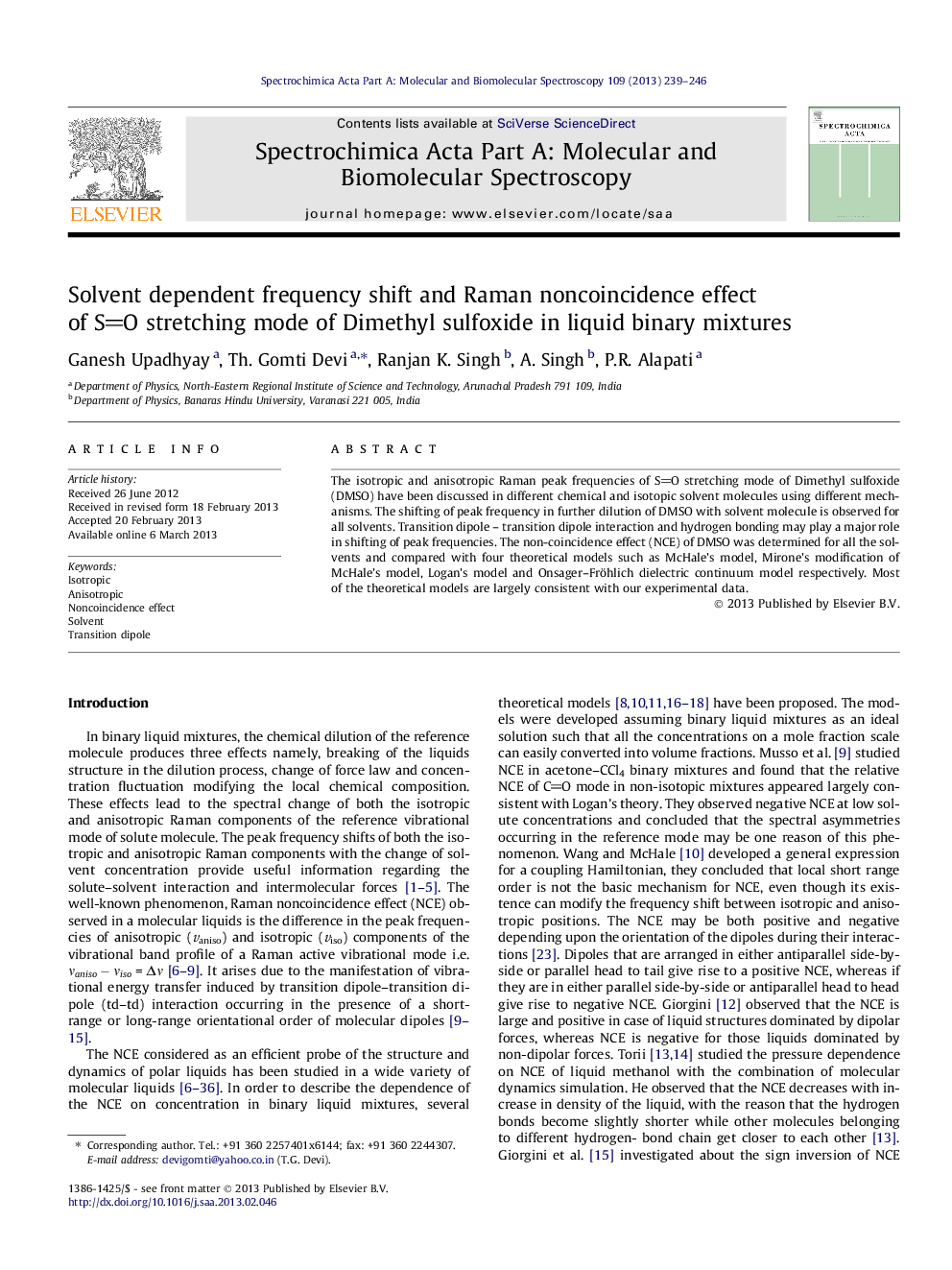| Article ID | Journal | Published Year | Pages | File Type |
|---|---|---|---|---|
| 1231547 | Spectrochimica Acta Part A: Molecular and Biomolecular Spectroscopy | 2013 | 8 Pages |
The isotropic and anisotropic Raman peak frequencies of SO stretching mode of Dimethyl sulfoxide (DMSO) have been discussed in different chemical and isotopic solvent molecules using different mechanisms. The shifting of peak frequency in further dilution of DMSO with solvent molecule is observed for all solvents. Transition dipole – transition dipole interaction and hydrogen bonding may play a major role in shifting of peak frequencies. The non-coincidence effect (NCE) of DMSO was determined for all the solvents and compared with four theoretical models such as McHale’s model, Mirone’s modification of McHale’s model, Logan’s model and Onsager–Fröhlich dielectric continuum model respectively. Most of the theoretical models are largely consistent with our experimental data.
Graphical abstractFigure optionsDownload full-size imageDownload as PowerPoint slideHighlights• Raman shift of SO stretching mode of CH3SOCH3 (DMSO) was studied in polar solvents. • Hydrogen bonding may play major role in shifting of peak frequencies. • The non-coincidence effect (NCE) of DMSO was determined experimentally. • Experimentally determined NCE is examined with four theoretical models. • Most of the theoretical models are largely consistent with our experimental data.
